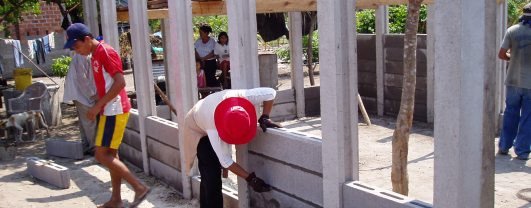To restore and improve the housing condition of those affected by the 2001 earthquakes through the strengthening of citizen participation and the organisation of those involved in development locally.
This housing reconstruction programme demonstrates how successful community development can result from rebuilding after a devastating earthquake. Appropriate earthquake resistant house designs have been developed and training is provided in construction and maintenance techniques, as well as business and community leadership skills.
To date:
Over 7,460 houses have been completed with households providing the labour and secure title to their property has been established for those who did not previously have the correct documents;
1,400 small businesses have been established; many of them run by women. The local municipalities have been involved throughout and welcome the increasing citizen participation that has resulted from the programme;
Environmental concerns of deforestation and pollution of water supplies have been addressed;
The approaches used in this programme are now being transferred to areas experiencing similar problems.






